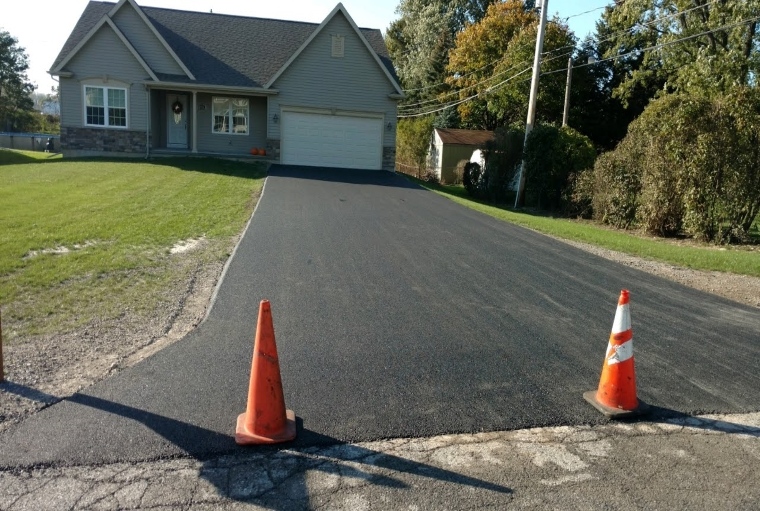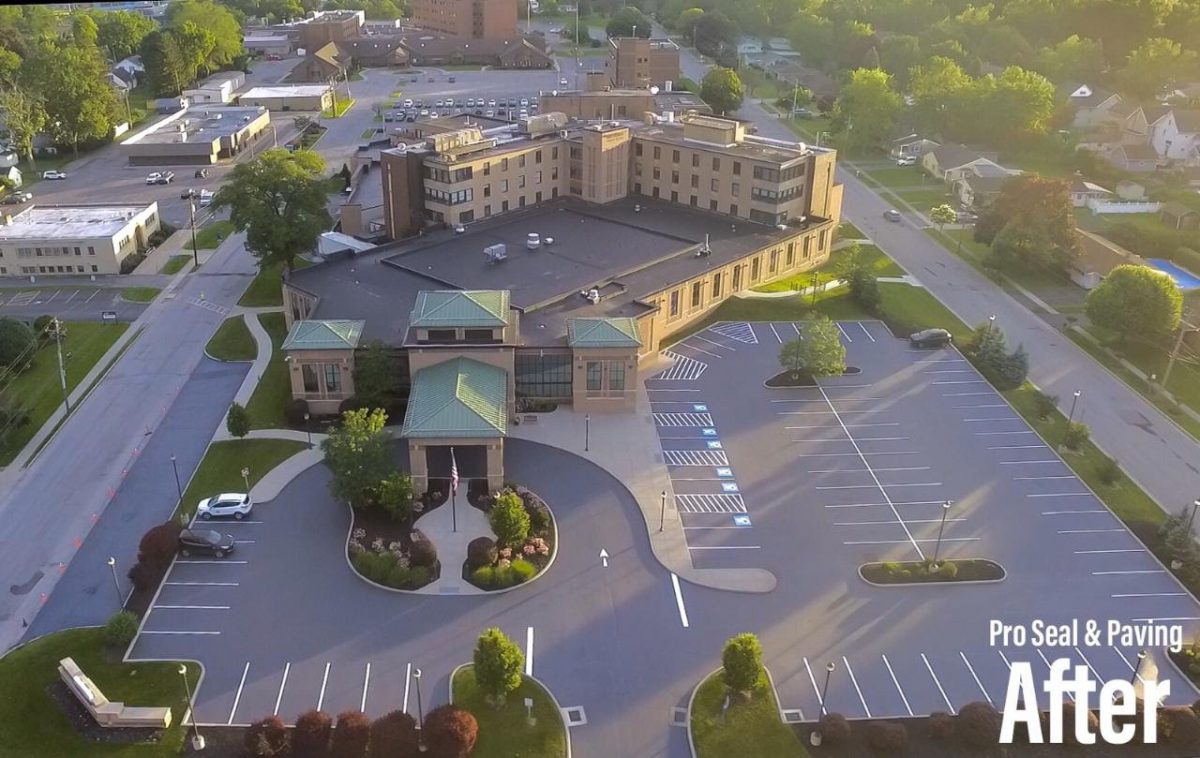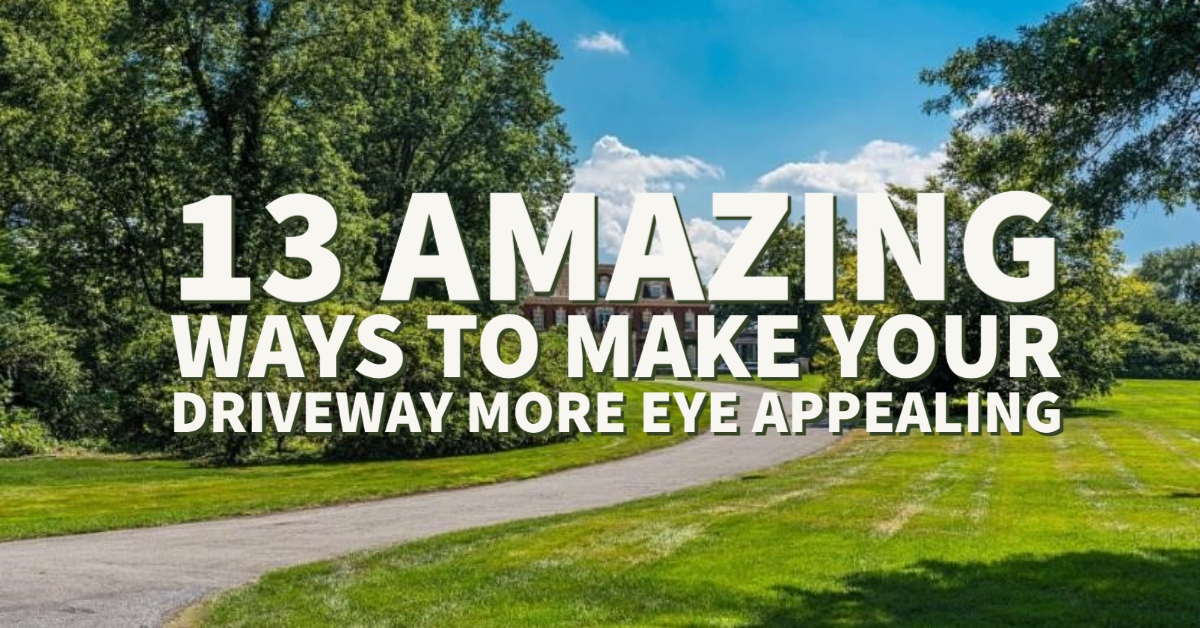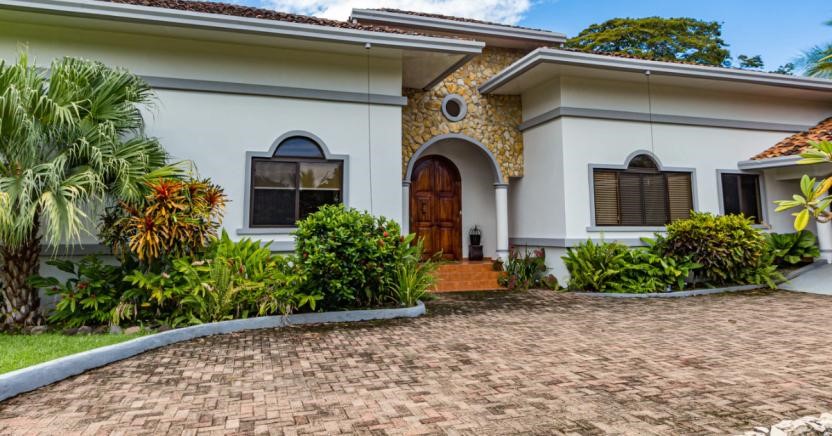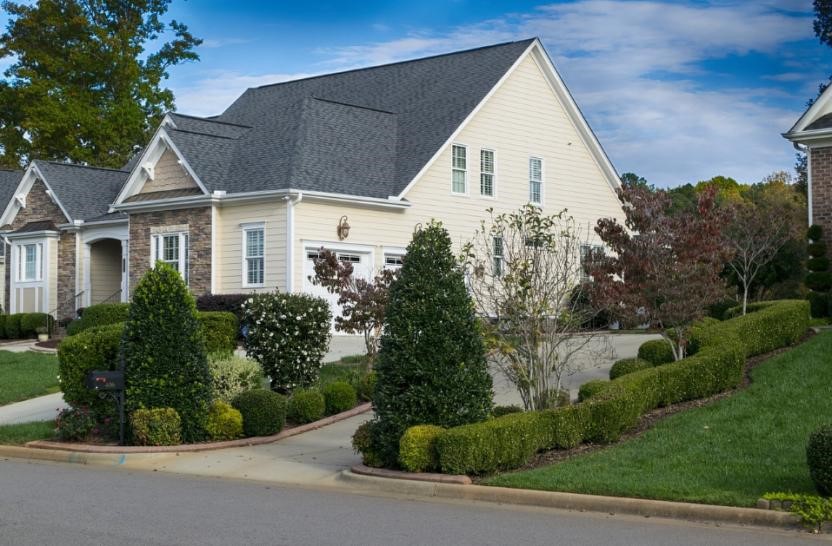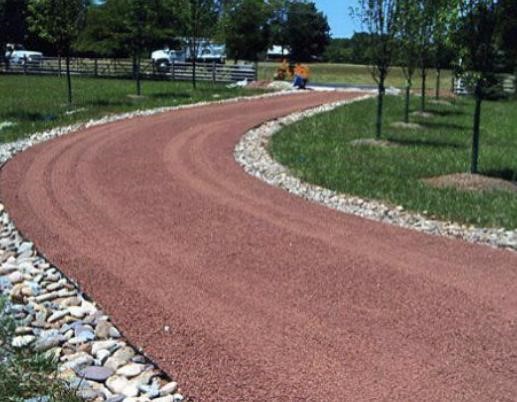Fresh Asphalt Driveways in Western NY – A Paving Contractor’s Perspective for Genesee, Orleans & Wyoming Counties
Hello, I’m Joshua Piscitelli, a professional paving contractor and owner of Pro Seal & Paving here in Western New York. I’ve spent years helping homeowners in Genesee, Orleans, and Wyoming counties improve their properties with quality asphalt driveways. One thing I’ve learned from experience is that a well-maintained driveway isn’t just about looking good – it’s about safety, convenience, and protecting your property value.
Your driveway is often the first thing people see when they visit your home, and its condition speaks volumes about how you care for your property. In fact, local county public works officials often stress that quality infrastructure – including well-built residential driveways – directly enhances residents’ quality of life (Orleans County, NY). A fresh asphalt driveway can dramatically boost your home’s curb appeal, ensure smooth and safe access, and even increase your property’s value.
In this article, I want to talk to fellow homeowners across Genesee, Orleans, and Wyoming counties about the importance of paving your residential driveway with fresh asphalt. We’ll start by looking at common driveway problems we face here in Western NY – from cracks and potholes caused by our harsh winters to the wear and tear of daily use. Then, I’ll explain why asphalt is often the best choice for driveways in our region compared to other materials like concrete or gravel. I’ll walk you through the asphalt paving process so you know what to expect, and break down the costs vs. long-term benefits of investing in a new asphalt driveway. You’ll also get some practical maintenance tips to keep your asphalt looking great for years to come – including how to handle sealing, snow removal, and avoiding common mistakes that can damage the pavement.
As a paving professional who lives and works in this community, I’ll share insights on finding the right contractor in Western New York. This includes what to look for in a paving company, key questions to ask before you hire, and a heads-up on local permit requirements for driveway paving in Genesee, Orleans, and Wyoming counties (yes, each county may require a permit for new driveways – we’ll cover that). Finally, I’ll give a friendly call to action on how you can reach out to my team at Pro Seal & Paving for a free consultation if you’re considering upgrading your own driveway.
Whether your current driveway is cracked and crumbling or you’re just exploring ways to enhance your home’s curb appeal, this guide will equip you with knowledge to make an informed decision. Let’s dive in!
Common Driveway Issues in Western NY
Living in Western New York has many perks, but gentle weather isn’t one of them. Our region’s climate can be tough on asphalt. If you’re a homeowner in Genesee, Orleans, or Wyoming County, you’ve likely seen firsthand how the elements and everyday use can deteriorate a driveway over time. In this section, we’ll discuss the most common driveway issues in our area and why they occur:
Freeze-Thaw Cycle Damage: Potholes, Cracks, and Crumbling Asphalt
Western NY winters are notorious for their freeze-thaw cycles. One day it’s freezing, the next day it’s mild – and that temperature swing wreaks havoc on paved surfaces. Potholes and cracks usually start when water seeps into small voids in the pavement. When the temperature drops, that water freezes and expands, pushing the asphalt apart. Later, it thaws and contracts, leaving a gap. This repeated flexing and pressure can turn hairline cracks into gaping potholes before you know it (Pot Hole Repairs | Wheatfield NY). According to local highway officials, each brutal winter “takes a toll on the local roads” (The Dangers of Potholes, Cracks, and Unstriped Parking Lots) – and the same is true for residential driveways.
If your driveway has a few cracks going into the winter, by spring you might find a network of cracks or even loose chunks of asphalt. The freeze-thaw cycle is one of the primary culprits. It’s not just theoretical – science and experience confirm that potholes are caused by the freeze-thaw process combined with moisture and traffic (Pot Hole Repairs | Wheatfield NY). In Genesee, Orleans, and Wyoming counties, where temperatures can swing above and below freezing multiple times in late fall and early spring, our driveways may go through dozens of freeze-thaw cycles each year. Over time, this natural process can cause severe damage: the surface crumbles, small potholes form and grow larger with each freeze, and your once-smooth driveway starts to resemble swiss cheese.
Snow Plows, Road Salt, and Heavy Vehicles – Winter Wear and Tear
Winter doesn’t just bring cold – it brings snow, ice, and the measures we take to fight them. Snow plowing is essential in Western NY, but plow blades scraping along your driveway can cause wear. If a plow blade catches the edge of a small pothole or crack, it can rip up chunks of asphalt. Even homeowners who shovel or snow-blow their driveways need to be careful; using metal shovels or snowblower blades set too low can scratch or chip the asphalt surface. I’ve seen driveways where each pass of the plow loosened a bit of pavement, and by winter’s end the damage was obvious.
Then there’s road salt and de-icers. We use salt to melt ice for safety, but salt can penetrate into tiny cracks and slow the refreezing of water. This means more thawed water can seep in – which can later refreeze deeper in the asphalt, exacerbating the freeze-thaw damage. The salt itself doesn’t chemically attack asphalt (asphalt is petroleum-based and generally salt-resistant, unlike concrete which salt can deteriorate), but using salt can lead to more frequent freeze-thaw cycling in the asphalt if not careful. Also, excess salt sitting on the surface can dry out the asphalt binder over time or leach into the base, potentially weakening it. In short, while salt is crucial for safety, it can indirectly contribute to asphalt distress if cracks are present.
Heavy vehicles and constant traffic are another factor. In rural parts of our counties, you might have heavier trucks or farm equipment occasionally using your driveway. Repeatedly parking heavy work trucks, RVs, or equipment on a residential driveway can cause the asphalt to flex and develop ruts or cracks, especially if the driveway wasn’t designed for that weight. Likewise, when the ground is softened during spring thaw, heavy loads can more easily deform the pavement.
Combine all these – the brutal freeze-thaw cycles, the scraping of plows, the use of salt, and the weight of vehicles – and it’s no surprise many driveways in Western NY start cracking or crumbling after a number of years. If you see potholes, alligator cracking (a network of cracks resembling reptile skin), or sections that are sunken or heaved, these are signs of the common issues taking hold. Once a driveway’s integrity is compromised, the damage tends to accelerate each season unless repairs or repaving are done.
Aging Asphalt: Signs It’s Time for a New Driveway
Even without severe winter damage, asphalt doesn’t last forever. A typical asphalt driveway in our climate might last around 15-20 years with good maintenance – but many factors can shorten that lifespan. As asphalt ages, the binding tar (bitumen) that holds the aggregates together begins to oxidize and dry out. The once-flexible surface becomes more brittle. You might notice the color fading from rich black to a dull gray – that’s a sign of oxidation and wear. Small cracks will start to appear from thermal expansion and contraction over the years. If those cracks aren’t sealed, water gets in and you’re on your way to the freeze-thaw potholes we just discussed.
How do you know it’s time for a new driveway? Here are some tell-tale signs:
- Widespread Cracks – A few small cracks can be filled, but if your driveway looks like a spider web of cracks (alligator cracking), the foundation is likely failing. Large cracks that return even after patching are a red flag.
- Multiple Potholes or Rough Surface – One pothole can be patched. But if new potholes pop up each spring, or the surface is extremely rough and pitted, the asphalt may be too far gone. Patching may no longer give you a level, safe surface.
- Drainage Issues and Heaving – If you see sections of the driveway that have heaved up or sunk (often from water erosion or tree roots) or you constantly have puddles, it might mean the base beneath the asphalt is compromised. Just repaving over these without fixing the base won’t be a long-term solution.
- Edge Crumbling – The edges of driveways sometimes crumble due to lack of support (especially if vehicles drive off the sides). If a large portion of the edges are broken away, the damage can migrate inward.
- Age Over 15-20 Years – Even without obvious defects, an older asphalt driveway (two decades or more) is a candidate for replacement. The materials simply degrade over time. Rather than spot-fixing endlessly, it could be more cost-effective to invest in a fresh pavement that will last many more years.
As a homeowner, it might be hard to let go of a driveway you’ve tried to maintain, but remember: a heavily cracked or patched driveway not only looks bad but can also be a hazard (trip and fall accidents, or tire damage to vehicles). An aging driveway can also drag down your home’s curb appeal and value. On the flip side, installing a new asphalt driveway can instantly refresh the look of your property and eliminate those daily annoyances (like bumping your car over potholes or weeding grass out of cracks). In the next sections, we’ll explore why choosing asphalt for that new driveway is an excellent decision, especially in our Western NY climate.
Why Choose Asphalt Over Other Driveway Materials?
If you’ve decided it’s time to upgrade your driveway, you might be weighing your material options. The most common driveway materials are asphalt (blacktop), concrete, gravel, and sometimes paving stones or bricks. Each has its pros and cons, but here in Western New York, asphalt tends to come out on top for residential driveways. Let’s discuss why asphalt is often the preferred choice for homeowners in Genesee, Orleans, and Wyoming counties when compared to other materials.
Cost-Effectiveness: One of the biggest advantages of asphalt is its affordability relative to materials like concrete or pavers. Asphalt driveways generally cost less per square foot to install than concrete. For example, asphalt might cost in the range of $5 to $7 per square foot, whereas concrete can run $8 to $12 or more per square foot for basic finishes (6 Different Types of Driveway Materials) (6 Different Types of Driveway Materials). Gravel is cheaper upfront than asphalt, true, but gravel comes with its own maintenance headaches (constant re-grading, replenishing lost gravel, dealing with mud or dust). In terms of bang for your buck, asphalt offers a solid, long-lasting surface without breaking the bank. It’s a great middle-ground – more durable and attractive than gravel, but much more budget-friendly than decorative pavers or stamped concrete. Plus, if an asphalt driveway does need repairs down the line, those repairs (like crack filling or patching) are usually cheaper and easier than repairing concrete slabs.
Durability in New York’s Climate: Our climate is a huge factor in the driveway decision. Asphalt is flexible by nature – it has a bit of give and can handle the expansion and contraction that comes with temperature fluctuations. Concrete, on the other hand, is rigid and can crack under severe freeze-thaw stress unless it has a ton of control joints cut into it (those lines you see in sidewalks and concrete driveways). Those joints themselves can be weak points and aren’t always pretty. Asphalt’s flexibility makes it less prone to frost heave damage compared to concrete (6 Different Types of Driveway Materials). Also, asphalt’s dark color helps it absorb sunlight. Even on cold winter days, a black asphalt driveway can warm up a tad in the sun, aiding in faster snow and ice melt. That can be a nice little perk in Buffalo-Rochester snow country! And unlike gravel, which can wash out or scatter with heavy rain and snow plowing, asphalt stays put and keeps a uniform surface. Asphalt also handles road salt without surface damage – salt might leave some residue, but it won’t spall (flake off) the surface as it can with concrete. Simply put, asphalt is built for Western NY’s weather extremes.
Smooth, Safe Surface for Vehicles and Foot Traffic: A fresh asphalt driveway provides a smooth, even surface that’s ideal for driving, walking, and playing. No bumps, no loose stones – just a continuous blacktop that’s gentle on tires (and on kid’s bicycles, rollerblades, and basketballs!). This smoothness isn’t just a luxury; it’s a safety feature too. No loose gravel means less risk of skidding. Fewer cracks or paver gaps means less chance of tripping. If you’ve ever pushed a stroller or snow blower over an uneven surface, you’ll appreciate how seamless asphalt can be. Additionally, the black contrast against snow helps you see where the driveway is when shoveling or plowing, which can help avoid accidental damage to lawn or landscaping adjacent to the drive. Asphalt also offers good traction for vehicle tires and shoes alike, especially when well-maintained. In comparison, concrete can be slick when wet or icy, and gravel can shift underfoot or under tires.
Quick Installation and Usability: Asphalt driveways can often be installed relatively quickly – sometimes in a day or two (not counting cure time), whereas concrete can take longer to pour and needs time to cure before it can be used. With asphalt, you can typically drive on it sooner (often within 1-3 days after paving, once it cools and hardens). If you’re replacing a driveway, the faster it’s done, the less time you have the inconvenience of construction at home. Asphalt’s quicker setting time means less disruption to your daily routine.
Easier Repairs and Maintenance: All driveways will eventually need maintenance, but asphalt is fairly forgiving in this regard. Small cracks can be filled easily with crack sealant (often as a DIY task or quick fix by a contractor), and the repair blends into the black surface. If a section gets damaged, you can patch that section or even resurface over the top of the old asphalt in many cases (laying a new layer of asphalt on top). Concrete, in contrast, often requires cutting out and replacing entire sections for a proper repair, which can be costly and leave patch marks. Likewise, if a gravel area develops a rut or hole, you need to bring new gravel and compact it – and it never truly “repairs” in the seamless way asphalt does. Asphalt can also be rejuvenated periodically by sealcoating (more on that in Maintenance Tips), which can make an older driveway look near-new again and extend its life. So, the lifecycle of an asphalt driveway, with preventative maintenance, can be very cost-efficient.
To be fair, concrete driveways do have some advantages – they last a long time (often 25-30+ years), and can be colored/stamped for decorative purposes. But in cold climates, the maintenance of concrete (sealing to prevent salt damage, dealing with cracks that inevitably form) and the higher cost often tilt homeowners toward asphalt. Gravel driveways are inexpensive initially and have a rural charm, but they require regular regrading, can be difficult to plow in winter (the plow can scoop gravel into your lawn), and they don’t offer the clean, firm surface that asphalt does for kids’ play or car washing, etc. Paver or brick driveways can look fantastic and upscale, but they are by far the most expensive option and still can suffer from weeds in joints and heaving if not perfectly installed – plus, a paver driveway in a snowy climate means you have to be careful snowblowing or shoveling so you don’t dislodge bricks.
For the typical homeowner balancing cost, durability, and aesthetics, a well-built asphalt driveway is often the ideal choice in Western NY. It performs well in our climate, looks great (that smooth black surface really gives a neat, polished appearance to your home’s frontage), and doesn’t drain the bank account. In the next section, I’ll explain how the asphalt paving process works – it’s useful to know what goes into that smooth black surface and why each step is important for a long-lasting driveway.
The Asphalt Driveway Paving Process
If you’ve never had a driveway installed or replaced, you might be curious what the process actually involves. Paving a driveway with asphalt isn’t just about dumping some blacktop and calling it a day – it’s a carefully managed process with several key steps. Knowing these steps will help you understand the value you’re getting from a professional contractor and why each stage matters for the longevity of your driveway. Let me walk you through how our crew at Pro Seal & Paving (and any reputable paving contractor) would approach paving a residential driveway:
1. Site Preparation and Grading: Every good driveway starts with good preparation. First, we inspect the site and prepare the ground. If you have an existing driveway (asphalt or concrete), we’ll likely remove it. The old material is usually broken up and hauled away for recycling (old asphalt can often be recycled into new asphalt mix). Once any old material is removed, we need to make sure the ground underneath is properly graded and compacted. Grading means shaping the ground so that water will run off the finished driveway and not pool in the middle or against your garage. We typically want a slight slope (even if it looks almost flat to your eyes) to encourage drainage. Proper grading is crucial in Western NY because we get a lot of precipitation year-round. After grading, the soil is compacted with equipment (like a vibratory roller or plate compactor) to create a stable base. If the soil is weak or clay-heavy, sometimes we’ll replace or stabilize it with better fill. In some cases, a geotextile fabric is laid down to help prevent the base gravel from sinking into soft soil over time. This prep phase is unglamorous, but it’s perhaps the most important step to ensure your driveway doesn’t settle or develop low spots later.
2. Base Installation (Foundation of Crushed Stone): With the sub-grade prepped, the next step is installing the base layer – usually consisting of crushed stone or gravel. This is like the foundation of your driveway. For most driveways, we lay down about 4 to 8 inches of aggregate base (the exact depth can depend on how stable the ground is and expected traffic load; heavier use might warrant a thicker base). The gravel is typically a mix of angular stones that interlock and pack down firmly. We spread the gravel evenly and then use a roller to compact it thoroughly. The goal is a solid, even base that can support the asphalt layer on top. This crushed stone layer allows for drainage (water can seep through the asphalt and into the ground without eroding soil) and provides a stable platform so the asphalt doesn’t crack from ground movement. Think of it like a house foundation – you wouldn’t build a house on loose dirt; likewise, we don’t pave on it. New York State’s construction guidelines note that an asphalt driveway should be laid over a well-compacted gravel base of adequate thickness (6 Different Types of Driveway Materials). Skipping on the base is asking for trouble – sadly I’ve seen cut-rate contractors lay only an inch or two of gravel or even none at all, and those driveways do not hold up. We make sure the base is done right so your driveway will last its full lifespan.
3. Asphalt Application: Now comes the part most people visualize – the hot asphalt mix being laid down. Asphalt (also called hot mix asphalt) is a combination of stone aggregate, sand, and petroleum-based bitumen (tar) that binds it all together. It’s heated to around 300°F at the asphalt plant so it’s workable. Our crew will transport that hot mix in a dump truck to your site. Working with asphalt is time-sensitive – it’s got to be placed and shaped before it cools and hardens. For residential driveways, the asphalt is often applied in one single layer (called a “lift”) usually about 2 to 3 inches thick after compaction. In some cases, for extra durability, contractors might do it in two layers (a base course and a top course), but for most home driveways a single proper layer is sufficient. We use an asphalt paving machine or, if space is tight, we spread and level it by hand with rakes and lutes. The asphalt is laid somewhat thicker initially (maybe ~3 inches) then compacted down to ~2.5 inches. At edges, we make sure to taper the asphalt slightly so there isn’t an abrupt drop-off, or we might hand-tool the edges for a clean finish. The key during application is to ensure consistent thickness and to maintain that proper slope we established during grading (so water will flow off). You’ll see the crew checking grade with long leveling tools or just an experienced eye. We also pay attention to connecting the new asphalt with other surfaces: for example, making a smooth transition to the road, to your garage floor, walkways, or any abutting surfaces. It’s a bit of an art to quickly and evenly spread that black, hot material, but a seasoned team makes it look easy.
4. Compaction and Finishing Touches: Once the hot asphalt is laid out in place, it needs to be compacted before it cools too much. Compaction (rolling) is what gives asphalt its strength and smoothness. We typically use a heavy roller (for a home driveway, a ride-on vibratory roller) to go over the entire surface multiple times. The roller presses the asphalt mix together, eliminating air pockets and bonding it to the base below. Proper compaction is critical – this is what ensures your driveway can handle cars without deforming, and it also improves the asphalt’s water resistance by making it denser. Corners or tight spots the big roller can’t reach are compacted with smaller equipment or even a hand tamper if needed. After rolling, the crew will do a walk-through for finishing touches. This includes checking the surface for any small bumps or divots and smoothing them out while the asphalt is still warm enough to work. We may also trim any messy edges and make sure the end of the driveway at the street is neat and meets the pavement flush so there’s no big bump.
Now your new asphalt driveway is down! It will be warm for a few hours and typically needs a bit of time to cool and harden. We usually recommend keeping vehicles off of it for at least 24-48 hours (and in hot summer, sometimes a little longer if the asphalt is still soft). Foot traffic is usually okay after a few hours once it has cooled.
5. Curing and Aftercare: Although you can use your new driveway in a day or two, it actually cures and hardens over time (the asphalt continues to fully settle and the light oils evaporate) over a period of weeks. During the first week, it’s best to avoid sharp turns of the steering wheel when your car is stationary on the driveway – since the asphalt is at its softest, a turning tire could scuff the surface. Also, avoid parking heavy vehicles in the exact same spot for long periods for the first few weeks – move them occasionally so you don’t create depressions. After a month or so, the asphalt will have significantly hardened. It’s often recommended to wait about 6 to 12 months before the first sealcoat on new asphalt, to allow it to fully cure (more on sealcoating later).
Throughout the paving process, a professional contractor will keep an eye on quality details like temperature of the asphalt (too cold and it won’t compact well), weather conditions (we generally don’t pave in heavy rain as it can cool the mix too fast or affect the base), and cleanliness (making sure no debris gets trapped under the asphalt, etc.). By following these steps – preparation, a strong base, proper asphalt thickness, and thorough compaction – we ensure that your new driveway will serve you well for years to come.
Now that you know what goes into installing an asphalt driveway, let’s talk about the investment: Is it worth it? What does it cost and what are the long-term benefits? In the next section, I’ll break down the cost considerations and how a new asphalt driveway can actually save you money (and headaches) in the long run.
Cost vs. Long-Term Benefits of Asphalt Driveways
Upgrading to a new asphalt driveway is a significant home improvement, and naturally homeowners want to understand the costs involved and what kind of return or benefits they can expect. Let’s discuss the typical cost of an asphalt driveway project in Western NY and weigh that against the long-term benefits – including durability, savings on repairs, and the potential boost to property value.
Upfront Investment and Typical Costs
The cost of an asphalt driveway can vary based on size, site conditions, and regional pricing, but let’s work with some general figures. In our area, a basic asphalt driveway installation might run on the order of $4 to $8 per square foot. So if you have a two-car driveway of, say, 600 square feet, you might be looking at somewhere around $2,400 to $4,800 as a rough ballpark. Costs can be on the higher end if you need removal of an old driveway, extra thick base, or if your driveway is very large or has an intricate shape that requires more hand-finishing. Additional features like drainage solutions (e.g. installing a culvert pipe under the driveway if a ditch runs alongside the road, which we’ll cover in permits) or curbing can also add to cost. Compared to concrete, which often ranges from $7 to $12 per square foot or more, asphalt is usually significantly cheaper for the same area. And while gravel is cheaper than asphalt initially, if you factor in the regular regrading and addition of new gravel every couple of years, the lifetime costs start to creep up, not to mention the time you put into maintaining it.
So yes, a new asphalt driveway is an investment – we’re likely talking a few thousand dollars for most homes. However, consider what you’re gaining with that investment: a smooth, attractive entrance to your home that requires minimal upkeep, and freedom from the cycle of constant crack filling or pothole dodging that an old driveway demands. When you pave fresh, you essentially reset the maintenance clock. The new driveway should be trouble-free for many years before it needs anything major (aside from optional sealcoating to protect it). That brings us to lifespan.
Lifespan and Savings on Repairs
A well-constructed and well-maintained asphalt driveway in Western New York can last on the order of 15-20 years, or even longer in some cases. Industry sources often cite the lifespan of asphalt driveways as 15-20 years (6 Different Types of Driveway Materials), but I’ve seen driveways go 25 years when they’ve been cared for (regular sealing, not overloaded, etc.) and we’ve also all seen cases where a poor-quality install fails in under 10. The goal with a professional install (like we described in the process section) is to get you to the upper end of that range. Over that lifespan, what kind of maintenance costs can you expect? Typically, very minimal for the first decade: maybe just the cost of a preventive sealcoat after year 1 or 2, then every few years (~$200-$400 depending on driveway size each time). Perhaps a crack fill here or there if a crack shows up (which a lot of homeowners can even DIY with a $10 tube of crack filler). So, over 15 years, you might spend a few hundred dollars on upkeep if you’re proactive. Compare that to an older driveway that’s limping along: you might be patching potholes every spring, which can cost a few hundred each time if you hire someone, or buying many buckets of cold patch yourself. Not to mention the hidden costs of a bad driveway – tire alignments if potholes knock your car around, or maybe even suspension damage in severe cases. There’s also the risk of trips and falls; while not a “cost” in dollars necessarily, it could become one if someone gets injured on your property’s disrepair. By investing upfront in new asphalt, you largely avoid those ongoing repair expenses and hassles.
Another factor is resurfacing vs. complete redo. If you install an asphalt driveway now and maintain it, you might be able to resurface it (lay a new top layer) after, say, 15 years to further extend its life, rather than having to dig it all out and start over. Resurfacing typically costs maybe 50-70% of the cost of a full installation (since the base and some asphalt is reused), so that can be a cost-effective refresh at the appropriate time. But if you let a driveway go until it’s completely failed (crumbling base, etc.), you lose the option to simply resurface – you’ll have to do the full replacement anyway. That’s another way that timely replacement when needed and then maintenance saves money: it preserves the foundation for possible future resurfacing.
Return on Investment and Increased Home Value
Homeowners often ask: Does paving my driveway actually increase my home’s value? The short answer is yes, it can. While it’s not as glamorous as a kitchen remodel, a new driveway does contribute to curb appeal and the overall impression of your property’s condition. Real estate experts often emphasize the power of curb appeal – one study even found that curb appeal can account for up to 7% of a home’s value (How Much Value Does a Driveway Add to Your Home? – FastExpert). The driveway is a big part of curb appeal because it’s front-and-center. A paved driveway creates a positive first impression – it tells buyers (and appraisers) that the property is well cared for. In contrast, a busted-up driveway can be a deterrent; some buyers see it and think, “Oh no, I’ll have to spend $$X fixing that,” which might reduce what they’re willing to offer.
In concrete terms, some estimates suggest a paved driveway can add as much as $5,000 to $10,000 to the resale value of a typical home (How Much Value Does a Driveway Add to Your Home? – FastExpert). This depends on the location and price range of the home, of course. In our region, where many homes already have paved driveways, not having one (or having one in bad shape) can actually hurt your value relative to others on the market. If most comparable homes have nice driveways and yours doesn’t, buyers will factor that in. So by upgrading your driveway, you could position your home to sell faster or at a better price. It’s partly an ROI calculation and partly about marketability – even if you don’t recoup every dollar in appraised value, the improvement can make your home more attractive to buyers, potentially leading to a quicker sale.
Even if you’re not planning to sell anytime soon, think of it this way: you’re investing in your own daily quality of life too. You get to enjoy a good-looking, problem-free driveway every day. You’ll have less stress every winter not worrying if new potholes are forming under that snow, or cringing every time you back out over a bump. There’s real value in the comfort and convenience a new driveway provides: no more puddles by your doorstep, no more weeds in the driveway, a safe place for kids to play basketball or ride scooters, a clean surface to shoot the hose on and wash the car. These little quality-of-life improvements are hard to put a dollar figure on, but they certainly contribute to the satisfaction of homeownership.
In summary, while a new asphalt driveway does have a significant upfront cost, the long-term benefits – reduced maintenance and repair costs, improved property value, enhanced curb appeal, and personal convenience – make it a very worthwhile investment for many homeowners. As with any investment, choosing the right professionals to do the job (and do it right) is key to getting those benefits. In the next section, we’ll talk about how to take care of your asphalt driveway to maximize its lifespan, and later on, how to find the best contractor to ensure you get a top-notch installation.
Maintenance Tips for Asphalt Driveways
One reason asphalt is popular for driveways is that it’s relatively easy to maintain. However, “low-maintenance” doesn’t mean “no maintenance.” Taking care of your asphalt driveway will protect your investment and can extend its life by many years. The good news is, basic asphalt maintenance is straightforward and not very time-consuming if done proactively. In this section, I’ll share some essential maintenance tips that I recommend to all my customers in Western NY:
- Sealcoating for Protection: One of the best things you can do for an asphalt driveway is periodic sealcoating. Sealcoat is a protective coating (usually a coal-tar or asphalt-emulsion based liquid) applied on top of the asphalt. Think of it like sunscreen for your driveway – it protects the asphalt from UV rays, water penetration, and chemicals. New asphalt shouldn’t be sealed immediately; as mentioned earlier, wait about 6-12 months so it can fully cure. After that, a good rule of thumb is to sealcoat every 2-4 years. Our Western NY climate with freeze-thaw and sun in summer can dry out the surface; sealcoat rejuvenates that oily binder on top. It also fills the very small surface voids and hairline cracks, reducing water penetration. A freshly sealed driveway looks brand new – jet black and even. Just be sure not to overdo it (more is not always better; too frequent sealing or thick buildup can cause peeling). Stick to a quality sealer applied at proper intervals. Late spring or summer is a good time to seal, when weather is dry and temperatures are warm enough for the sealer to cure.
- Crack Sealing – Treat Cracks Early: Inevitably, you may get some cracks in your asphalt over time, especially as it ages or if there’s slight settling. The key is to seal cracks while they’re small. I can’t emphasize this enough – a little crack can turn into a pothole if left open to water. For cracks under about 1/2 inch wide, there are rubberized crack fillers that can be applied (some homeowners do this themselves with products from hardware stores, or you can have a contractor do it as part of a maintenance service). This filler will keep water out of the crack and help prevent it from expanding during freezes. For larger cracks or slightly sunken areas, a professional might use a hot pour rubberized asphalt sealant or even cut and patch the area if needed. Walking your driveway every fall and spring to check for new cracks and getting them sealed up is a great habit. In Western NY, I recommend crack sealing before winter (around October) so you go into freeze-thaw season with as watertight a surface as possible, and then reassess in spring.
- Ensure Proper Drainage: Water is the number one enemy of pavement. Besides the basic slope of the driveway, pay attention to any areas where water tends to collect. Keep your drainage ditches and culverts clear. In many rural parts of Genesee, Orleans, and Wyoming counties, driveways have a culvert pipe underneath where they meet the road (to allow roadside ditch water to flow through). Make sure leaves or debris aren’t clogging those, especially in fall. If you notice water pooling on your driveway, you might need to sweep it off or look into adding a drain or regrading that section. Also, avoid edging your driveway with soil that’s higher than the driveway – that can trap water on the asphalt. Keeping the sides of the driveway clear or slightly lower (with gravel or grass at a lower grade) allows water to run off. Proper drainage goes a long way to preventing both cracks and the dreaded “black ice” in winter.
- Smart Snow Removal Practices: We talked about how plows and shovels can cause damage if used improperly. To protect your asphalt in winter, if you hire a plowing service, let them know you have a new (or well-maintained) asphalt driveway so they can adjust their plow blade height slightly to avoid scraping the surface hard. Most pros do this automatically for residential drives (they’ll leave 1/2 inch or so of snow which can be shoveled off or left to melt). If you shovel yourself, consider using a plastic shovel or one with a rubber blade edge – they’re gentler on the surface than a sharp metal edge. For snow blowers, again, set the skid shoes so it doesn’t grind directly on the asphalt. When it comes to de-icing, regular rock salt (sodium chloride) is effective and won’t directly harm asphalt, but you can also use Calcium Chloride pellets which work at lower temps and are a bit less harsh on surrounding landscapes. Avoid using fertilizers or weird chemicals on the asphalt to melt ice – some can be corrosive or leave residues. After winter, it’s a good idea to rinse off the driveway (or let a few good rains do it) to remove leftover salt and de-icing chemicals, just to be kind to your driveway and nearby grass.
- Avoiding Heavy or Sharp Hazards: Although asphalt is durable, certain things can damage it if you’re not mindful. Try to avoid consistently parking extremely heavy vehicles or equipment in one spot, especially if the driveway is on the newer side. If you have to store something like a boat on a trailer or an RV, consider placing plywood under the wheels to distribute the weight a bit. Also, be cautious about jack stands, motorcycle kickstands, or other point loads – on a hot day, those small points can press into asphalt (I’ve seen kickstands leave divots). Use a flat piece of wood or metal under such stands. Watch for leaking automotive fluids – if your car is dripping oil or gas, know that petroleum products can soften asphalt since asphalt itself is petroleum-based. Clean any spills with an absorbent as soon as possible. And if you’re doing home improvement projects, avoid dropping heavy tools or dumping harsh chemicals like paint or solvents on the driveway. It sounds like common sense, but these little things will keep the asphalt in top shape.
- Periodic Cleaning and Care: This is more about appearance, but giving your driveway an occasional cleaning can’t hurt. Sweeping or using a blower to remove leaves and sticks not only looks better but prevents wet leaves from sticking and staining. If you get any small oil stains from cars, you can use an asphalt-safe degreaser to clean them so they don’t degrade the spot over time. Also, keep grass and weeds from encroaching onto the edges of the asphalt – they can sometimes grow into the small gap between asphalt and soil and widen it. A string trimmer used along the edges every so often works well, or an asphalt/concrete edging tool if you want a really crisp separation between lawn and driveway. By keeping the edges neat, you also discourage water from sneaking underneath the asphalt along the sides.
By following these maintenance tips, you’ll protect your driveway and get the maximum lifespan out of it. The maintenance tasks are relatively simple: occasional sealing, promptly addressing cracks, mindful snow removal, and general care. Here at Pro Seal & Paving, we offer maintenance services like sealcoating and crack repair, and we’re always happy to advise our customers on how to upkeep their new driveway. With proper care, your asphalt driveway will continue to look great and perform well year after year, protecting the investment you made in upgrading your home’s curb appeal.
Next, let’s shift focus to how you can ensure your driveway project is in the right hands. Not all paving contractors are created equal, and a lot rides on choosing an experienced, trustworthy company. In the following section, I’ll give some pointers on finding the best paving contractors in Western New York, including what to look for and what local regulations (like permits) you need to be aware of before the paving crew arrives.
Finding the Best Paving Contractors in Western New York
Choosing a contractor to pave your driveway is a big decision. The durability and quality of your new asphalt driveway will depend largely on the skill and reliability of the people who install it. As a homeowner, you want to make sure you’re getting a fair deal and that the work will be done correctly the first time. Western New York has several paving companies serving Genesee, Orleans, Wyoming, and surrounding counties – so how do you pick the right one? Here are some tips from my perspective (as someone in the industry who knows what it takes to do the job right) on finding the best paving contractor for your project:
What to Look for in a Professional Paving Company
Experience and Track Record: Look for contractors with a proven track record and years of experience in the area. Paving in Western NY isn’t the same as paving in a warm climate – the company should know how to build driveways that withstand frost and heavy snow. An experienced local contractor will understand soil conditions in towns like Batavia, Albion, Warsaw, etc., and have a sense of what thickness and materials work best. Don’t hesitate to ask how long they’ve been in business or how many driveways they’ve done. For instance, at Pro Seal & Paving we’ve been serving the region since 2008 (over 16 years) and have completed hundreds of residential driveways, which has given us a depth of knowledge on best practices. A newer company might offer a lower price, but you don’t want to be their learning project.
Local Reputation and Reviews: Check the company’s reputation. This can be through online reviews, testimonials, or simply word-of-mouth in your community. If your neighbors or friends have had driveways paved, ask about their experience. Was the contractor communicative and professional? Did the driveway hold up well? You can also look at sites like the Better Business Bureau (BBB) – for example, Pro Seal & Paving is BBB accredited and you can see if there have been any complaints. Local Facebook community groups or Nextdoor can be another source to ask for recommendations or hear about others’ experiences. A company that consistently does quality work will have plenty of satisfied customers willing to vouch for them.
Proper Licensing and Insurance: Always verify that the contractor is fully insured and, if required, licensed to perform work in New York. Paving contractors should carry liability insurance and workers’ compensation insurance at minimum – this protects you, the homeowner, from liability in case something goes wrong or a worker is injured on the job. You can ask for a certificate of insurance. In terms of licensing, New York State doesn’t have a statewide license for pavers, but some counties or towns may have permit or license requirements for contractors. Reputable contractors will be aware of and comply with any local regulations. The key is: if a contractor cannot provide proof of insurance or gives you the runaround on this, that’s a red flag – you should move on to someone else. Legitimate companies operate with the proper credentials.
Written Detailed Estimates: When you contact contractors, they should be willing to come out, look at your existing driveway and give you a written estimate. Pay attention to the details in the quote. It should outline the scope of work – for example, removal of old driveway, how many inches of gravel base, how many inches of asphalt, any specific drainage work, and so on. If one quote is significantly cheaper than another, check if they’re specifying less material or a thinner driveway. Sometimes a low bid might mean they plan to cut corners (like only 2 inches of asphalt compacted or skimpy base prep). Make sure you’re comparing apples to apples. A professional contractor will gladly explain their plan and why it’s appropriate. Also, be cautious of anyone who gives a “verbal” quote that sounds too good to be true but won’t put it on paper – insist on a written contract before work begins.
Warranty and Follow-Up: Does the contractor offer any kind of warranty or guarantee on their work? Many good pavers will stand behind their installation for at least a year or two (covering issues like excessive settling or raveling that shouldn’t happen with proper work). Keep in mind, a warranty typically won’t cover things like cracks from abnormal use or lack of maintenance, but it’s nice to know they will fix any true workmanship issues. Also, find out if they offer follow-up maintenance services – many paving companies (like ours) also do sealcoating and repairs, which is convenient for you to have a one-stop shop for future needs. If they do, it shows they’re interested in an ongoing relationship with their customers and not just a quick one-and-done job.
Professionalism and Communication: First impressions count. How a contractor handles your inquiry can tell you a lot. Do they respond promptly to your call or email? Are they courteous and willing to answer questions? A driveway paving job typically takes a day or two; it’s relatively quick, but you still want a company that respects you and your property. The crew should be professional – that means they show up when promised, use quality equipment, work efficiently, and clean up after themselves. Sometimes small things, like whether they provide references or address your concerns about things like landscaping or yard disruption, indicate the level of professionalism. Trust your gut: if something feels off in the estimation phase, it might be better to choose a different contractor, even if it costs a bit more.
Questions to Ask Before Hiring a Contractor
When you’ve narrowed down your choices, don’t be shy about asking questions. You are the customer and have every right to understand what you’re paying for. Here are some useful questions to pose:
- How will you handle the removal of my old driveway? (If applicable – you want to hear that they’ll fully remove old material and cart it away, not just pave over existing issues unless it’s truly suitable for overlay.)
- What kind of base will you install? How thick? (Listen for specifics, e.g. “We’ll put down 6 inches of compacted Item #4 stone” – vague answers like “some gravel” might be a concern.)
- How thick will the asphalt be and how many layers? (Standard is often 2.5-3 inches compacted for residential, in one layer. Some might do 2 layers – a base and top – which can be good for heavier use driveways. Make sure they’re talking in compacted thickness; sometimes folks quote before compaction which sounds thicker.)
- Do I need to do anything before or after the install? (Good contractors give you prep instructions, like moving cars or keeping area clear, and after-care instructions, like when you can drive on it, when to seal, etc.)
- Will you handle obtaining any necessary permits? (This is important – see next subsection on permits. Some contractors will take care of permits for you or at least guide you.)
- Can you provide addresses of some recent driveways you’ve done? (Seeing their work can be helpful. A confident contractor will give you a couple of local examples you could drive by.)
- What’s the payment schedule? (Beware of contractors asking for a large sum upfront. A small deposit is common, or paying for materials on delivery, but you should not pay in full until the job is done to your satisfaction. Also be cautious of only-cash deals or no receipt provided – reputable companies are usually fine with check/credit and providing an invoice.)
Asking these questions will not only get you the info you need, but the way the contractor answers will give insight into their honesty and knowledge. You want someone who patiently addresses these points, rather than someone who gets annoyed or dodges them.
Local Permit Requirements in Genesee, Orleans, and Wyoming Counties
One aspect that sometimes gets overlooked is the need for any permits or approvals before installing or expanding a driveway. In our region, the rules can vary depending on whether your driveway connects to a town road, county road, or state highway. As a homeowner, it’s important to be aware of this, and a good local contractor will often know the regulations and help you navigate them.
- Genesee County: If your driveway ties into a county road in Genesee County, a permit is required for a new installation. The Genesee County Public Works Department does issue formal driveway permits for new driveways on county roads (Permits – Genesee County, New York). As part of that, they often require that a proper culvert pipe (smooth interior plastic pipe) be installed if there’s a ditch, to maintain drainage (Permits – Genesee County, New York). In fact, Genesee County will, at their schedule, install that culvert pipe for you (you purchase the pipe, and they provide labor and materials to install), or they allow a contractor to do it, but either way a permit is needed for the installation of the driveway and culvert. If you’re just repaving an existing driveway without altering the width or drainage, usually no permit is needed, but it’s worth checking if any changes are made. Driveways on town/village roads in Genesee County would follow the town’s rules (many towns require a simple permit for a new curb cut/driveway, mostly to ensure drainage is handled).
- Orleans County: Orleans County similarly requires a Highway Work Permit for work in the county right-of-way. If your driveway intersects a county road, you’d need to get a permit from the Orleans County Department of Public Works (they have a work permit application process). The permit ensures that any work like installing a culvert, cutting the curb, or altering drainage in the ditch is done to county standards (). As part of their permit conditions, Orleans County DPW notes that any cuts in the pavement have to be restored properly and that proper procedures (like backfilling and compaction per state specs) must be followed (). This is basically to protect the public road and ensure your new driveway doesn’t inadvertently cause issues on the roadway (like water buildup or pavement damage). If your driveway is on a town road in Orleans County, you’d check with the town highway department or code office – typically a smaller driveway permit might be needed just so they know you’re adding a driveway or changing one.
- Wyoming County: In Wyoming County, the Highway Department explicitly requires a Driveway Permit for new or widened driveways on county roads (Highway Department | Wyoming County, NY). They’ve published a Driveway Pipe Installation Policy that homeowners must follow. For example, permit applicants must supply their own culvert pipe (smooth interior corrugated polyethylene or approved metal pipe) for the driveway, and the county specifies that it should have at least 12 inches of cover (soil/gravel) over the pipe to prevent crushing (Microsoft Word – 2024 09-04 Driveway Permit). The county highway department does not install the driveway pipe for you in Wyoming County – it’s up to the homeowner or contractor – but they will inspect to ensure it’s done right. They also require appropriate end sections on the pipe and proper backfill and tamping of material over it (Microsoft Word – 2024 09-04 Driveway Permit). There’s a small permit fee (for instance, Wyoming County’s fee was $25 as noted in their permit form (Microsoft Word – 2024 09-04 Driveway Permit)). Essentially, this permit process is to make sure your driveway connection to the road doesn’t interfere with drainage or create a hazard. For town roads in Wyoming County, again the town might have their own permit (many towns default to the county or state rules depending on the road type).
Why do permits matter? It might seem like bureaucracy, but these rules ensure that, for example, a driveway isn’t installed in a way that blocks a drainage ditch or causes water to back up onto the road or your neighbor’s property. They also make sure sight lines are safe (like not placing a driveway on a dangerous curve without proper measures). As a homeowner, you should check with your town or county highway department if you’re significantly changing the driveway (width, location) or adding a new one. If you’re hiring a contractor, ask if they will handle the permit application. Many times, contractors will include that in their service – we often pull permits on behalf of clients or advise them exactly where to go and which forms to fill. In some cases, if a driveway is being redone in the same footprint and no culvert changes are needed, no permit is necessary, but it’s good to verify.
Also, note that if you live on a state highway (routes managed by NYS), the New York State Department of Transportation may require a driveway permit from the state for any modifications – your contractor should definitely be aware of that.
By following the local regulations, you not only stay on the right side of the law, but you also gain peace of mind that your driveway is built to standards that protect you and your community. Plus, should you ever sell your home, you don’t want an unpermitted modification to become an issue during closing.
Now that we’ve covered how to vet a contractor and handle the preliminaries, I’d like to conclude by inviting you to consider our team for your project. In the next section, I’ll offer a friendly call to action – if your driveway in Western NY needs an upgrade, Pro Seal & Paving is here to help make it happen with top-notch quality and personal service.
Call to Action: Contact Pro Seal & Paving for Your Driveway Upgrade
After reading all of this, you might be envisioning how a fresh asphalt driveway could transform your home’s curb appeal and solve those nagging issues with your current drive. If you’re a homeowner in Genesee, Orleans, or Wyoming County (or anywhere in the Western NY region) and you’re considering upgrading your driveway, I encourage you to reach out to Pro Seal & Paving – my team would be happy to help you make it a reality.
At Pro Seal & Paving, we take pride in being a local, family-owned business that has been serving the community for over 16 years. We’re not a fly-by-night outfit – we’re your neighbors, with offices in Batavia and Albion, NY, and we’ve built our reputation one quality driveway at a time. When you choose us, you’re choosing a team that combines state-of-the-art equipment with old-fashioned expertise and work ethic. As the owner, I’m involved in projects and ensure that we treat every driveway as if it were our own property. Our crew is experienced, respectful, and dedicated to doing the job right from start to finish.
Why choose Pro Seal & Paving? Here are a few reasons we believe we stand out as the best choice for driveway paving in Western NY:
- Proven Experience: We’ve been in the asphalt paving business since 2008, handling everything from small residential driveways to large commercial parking lots. We know what mix designs work best for our climate and we stay updated on industry best practices. Our portfolio of work in towns like Batavia, Albion, Medina, Perry, and beyond speaks for itself – chances are you’ve driven on driveways or parking lots we’ve paved without even realizing it!
- Quality Materials and Workmanship: We never cut corners on materials. We source high-quality asphalt mix and ensure a proper gravel base for every project. Our equipment (pavers, rollers, trucks) is well-maintained to ensure efficient and proper installation. We pay attention to the details – from proper grading for drainage to smooth finishes. The result is a driveway that not only looks great when it’s done, but stays great for years. We also stand behind our work with a satisfaction guarantee and will address any issue that might arise. Our goal is that you are thrilled with your new driveway.
- Customer Service and Communication: From the first phone call or email, you’ll find our team friendly and helpful. We offer free estimates and consultations – I’ll personally come out to assess your driveway and discuss your needs and give you a fair, transparent quote. We’re happy to answer questions (even if you’re not ready to commit, we’ll share our knowledge so you can make an informed decision). During the project, we keep you in the loop – you’ll know the schedule, and we’ll coordinate everything to minimize inconvenience. We treat our customers with honesty and respect, because we value the long-term relationship. Many of our new clients come through referrals from satisfied homeowners we’ve served.
- One-Stop Shop for Paving and Maintenance: We’re not only about paving new driveways. We provide sealcoating, crack filling, and repair services as well. That means if you want to keep your driveway in tip-top shape years down the line, you already have a trusted partner to call. We can come back to sealcoat or stripe your driveway, or even expand it if you decide to widen. Knowing the same company that installed your drive can also maintain it is a comfort for many homeowners. It’s part of our commitment to be there for the full life cycle of your driveway.
- Fully Insured and Locally Trusted: As mentioned earlier, we carry full insurance for your protection and ours. We also handle any required permits or will guide you through them, so you won’t have to worry about the paperwork. Our business is accredited and highly rated – feel free to check our references or online reviews. We’re proud of the trust we’ve built in the Western NY community and would be honored to earn your trust as well.
Ready to take the next step? Getting started is easy. You can give us a call at 585-356-8689 to schedule a free estimate. Typically, I can arrange a visit to your property at a convenient time, assess your current driveway, and provide you with a written estimate on the spot or within a day. If you prefer, you can also visit our website and fill out the “Get Estimate” contact form (About Us | The Best Sealing & Paving Company in Albion & Batavia, NY) (About Us | The Best Sealing & Paving Company in Albion & Batavia, NY) – just provide your info and a brief description, and we’ll get back to you promptly. We’ll discuss your goals, whether it’s a brand-new driveway, an extension to park that extra car, or solving a drainage issue that’s been bugging you. We’ll give you our professional recommendations with no obligation.
At Pro Seal & Paving, our mission is to make the process easy and stress-free for you, and deliver a finished product that exceeds your expectations. We love seeing the smile on a homeowner’s face when they see their new driveway – it never gets old for us!
Improve your home’s curb appeal, functionality, and value today with a fresh asphalt driveway. With winter around the corner (or maybe just behind us), now is a great time to plan your paving project so you can enjoy a trouble-free, great-looking driveway for years to come.
Don’t settle for crumbling pavement or the headache of constant repairs. Let our professional team provide you with a durable, beautiful asphalt driveway that will serve as the welcome mat to your home.
Give Pro Seal & Paving a call or message today, and let’s get started on making your driveway the best it can be.
I look forward to the opportunity to work with you and show you why so many Western New York homeowners trust us for their paving needs!
— Joshua Piscitelli, Owner, Pro Seal & Paving


